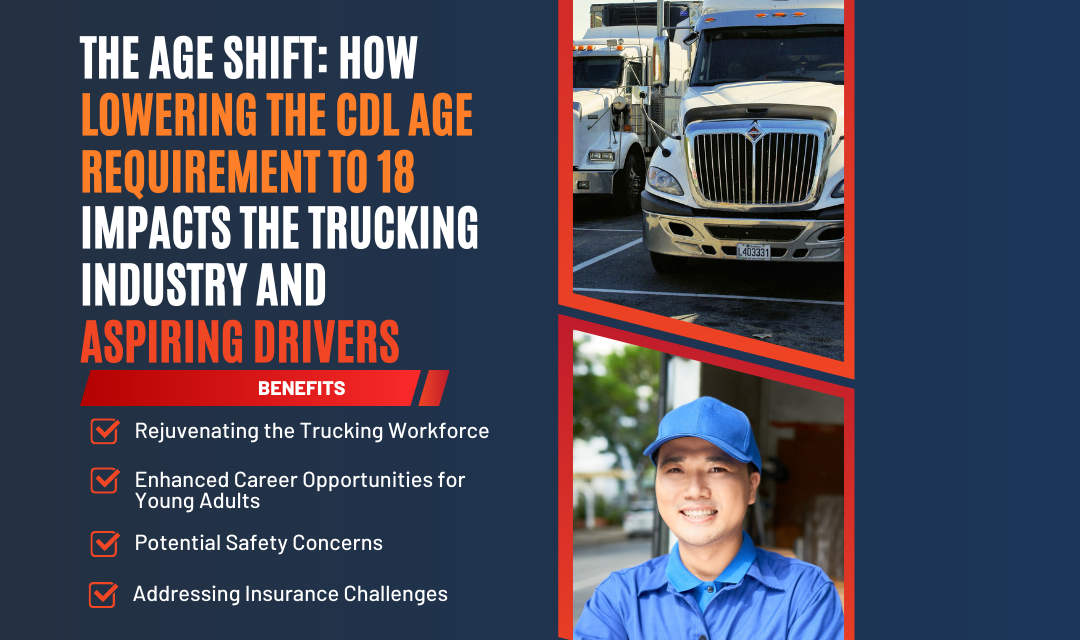The trucking industry has long been grappling with a driver shortage, which has only intensified in recent years. In an effort to address this issue, the United States has recently lowered the age requirement for obtaining a Commercial Driver’s License (CDL) from 21 to 18. This change has the potential to significantly impact the industry, as well as create new opportunities for young adults seeking a career in trucking. In this blog post, we will discuss the implications of this age change for both the trucking industry and aspiring drivers looking to obtain their CDL earlier in life.
Rejuvenating the Trucking Workforce
One of the most immediate effects of lowering the CDL age requirement is the influx of young talent into the trucking industry. By allowing 18-year-olds to obtain their CDL, the industry can tap into a new pool of potential drivers who may have otherwise pursued different careers. This change can help mitigate the driver shortage, ensuring that the transportation sector continues to meet the demands of the growing economy. Additionally, the inclusion of younger drivers can contribute to a more diverse and dynamic workforce, fostering innovation and fresh perspectives within the industry.
Enhanced Career Opportunities for Young Adults
The new age requirement for obtaining a CDL opens up a world of opportunities for young adults who are eager to begin their careers. Aspiring drivers no longer have to wait until they turn 21 to embark on a lucrative and fulfilling career in trucking. This change not only benefits the individuals who can now enter the workforce earlier but also serves as a boon for the industry, as it can attract motivated and energetic individuals who are eager to make a difference.
Potential Safety Concerns
While the lowered age requirement may help address the driver shortage and create new opportunities, it also raises concerns regarding safety on the roads. Younger drivers generally have less experience behind the wheel, which could increase the risk of accidents involving large commercial vehicles. To mitigate this risk, it is crucial that the industry maintains stringent training standards and provides comprehensive education for all new drivers, regardless of age. With proper training and ongoing support, younger drivers can develop the skills and experience necessary to operate commercial vehicles safely and responsibly.
Addressing Insurance Challenges
The age change also brings about insurance challenges for both trucking companies and young drivers. Insurance providers may be hesitant to cover younger drivers due to their lack of experience and perceived higher risk. To overcome this hurdle, trucking companies may need to implement robust training programs and safety protocols to reassure insurers and secure coverage for their young drivers. In turn, this could lead to a stronger emphasis on safety within the industry as a whole.
The decision to lower the CDL age requirement to 18 has far-reaching implications for the trucking industry and aspiring drivers alike. While it presents an opportunity to rejuvenate the workforce and create new career paths for young adults, it also raises concerns about safety and insurance challenges. By acknowledging and addressing these concerns, the industry can ensure that this age change benefits all stakeholders while maintaining a strong commitment to safety and responsibility on the road. As we move forward, it will be interesting to see how the trucking industry adapts to this new landscape and leverages the potential of its younger drivers.

